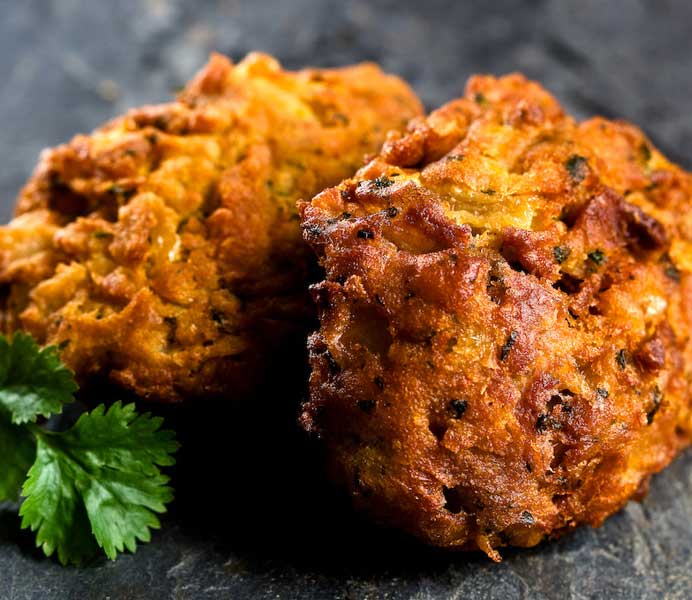
Most of you reading this will know onions from meals such as onion soup (the giveaway is in the name), shepherd’s pie, spaghetti bolognese, and raw onion salad. The latter’s quite harsh on the old gut, but all that folic acid will certainly be enough to meet your daily requirements of folic acid. Which is cool.
At some point in the history of Indian cuisine, someone got their bhajji and jammed them onions in there. Bhajjis themselves have existed since antiquity, but the onion variety was only popularised after Lebanese poetry writer Kahil Gibran’s tome The Prophet was mistranslated into English as The Bhajji by ignorant English imbeciles. Drat and double drat, sir!
Onion bhajjis remained a great Indian secret until The Prophet mess up, but there were numerous recipe failures along the way to its discovery and perfection. Mud bhajji was a miserable failure, as was the more recent Fish & Chips bhahjji (circa 1890). Pot Noodle took things to a logical conclusion and invented an onion bhajji variety in 1910, and it was only Gibran’s Buddhist leaning and understanding of perfection which brought to the world tasty fried onion stuffs. Sadly, copycats brought the onion ring out later as a poor human’s version. Dimwits!
These days they is everywhere! One can’t move for them, almost literally. One can now purchase onion bhajjis in stores such as Toys ‘R’ Us… we think. Given the success of the onion bhajji one has to ponder why there has never been a TV series based on the food stuff. Technically, SpongeBob SquarePants looks a bit like an onion bhajji, except he’s yellow. Perhaps OnionBhaji ZestPants would be a good alternative… although that is probably plagiarism in one form or another.
Ultimately what we’re stating is this: we have no idea what the history of the onion bhajji is. It probably all began with the chicken and the egg, before morphing into tarka daal which needed crisping up a notch. Enter the deep fat fryer and the end result is an excellent cuisine we couldn’t live without. What ho!

Yum!
LikeLiked by 2 people
Yeah, they’re one of my all time favourite food stuffs!
LikeLiked by 1 person